Asclepias syriaca
The host plant for monarch butterflies, this milkweed is also attractive to other butterfly species
Asclepias syriaca common milkweed
Common milkweed (Asclepias syriaca) has a very strong, sweet scent that attracts a variety of visitors, including butterflies, bees, beetles, flies, and wasps. On the underside of the leaves, one may find small pearl-like structures, which are the eggs of the monarch butterfly. When these eggs hatch, the young caterpillars feed on the leaves of the plant. This relationship highlights the importance of common milkweed in the ecosystem, as it provides essential nourishment for monarch butterflies during their larval stage, while also supporting a diverse range of pollinators.
Milkweed flowers, including those of common milkweed, feature a characteristic structure with five reflexed petals and five tubular hoods, each with a horn that arches over the central column. This central column, called the gynostegium, contains both the male (stamens) and female (carpels) reproductive parts. The intricate arrangement of petals, hoods, and horns plays a crucial role in the plant's specialized pollination process.
The spindle-shaped seed pods form in the fall and contain dark brown seeds attached to silken, fluffy parachute structures. These parachute-like structures enable the seeds to be carried by the wind, facilitating their dispersal. You may find these feathers float by on an autumn day.
Habitat & Range
Common in fields, roadsides, edges of forests.
Present throughout the state.
| EMP: | FACU |
|---|---|
| NCNE: | UPL |
Phenology
Flowers late May to early August.
Characteristics
Inflorescense several terminal many-flowered umbels; in upper axils
Flowers purple to greenish; 5-parted crown: 5 downwardly reflexed petals supporting 5 vertical horns sticking out from cylindrical hoods bending over the shorter column (containing stames and carpels) in the center
Leaves opposite, simple, oblong-lanceolate to oval
Stems erect, unbranched, 3-6½′
Fruit spindle-shaped pods with covered with small 'warts', 4-6″ long; seeds flat, brown, with a papery wrapping and fluffy parachute attached; green when young turning brown/tan as they mature
Height avg 2 to 4′, can grow up to 6½′
Plant Codes
S-rank: S5 (Secure)
G-rank: G5 (Secure)
Ecology
Host plant for Monarch butterfly. Small insects and some caterpillars feed on the leaves.
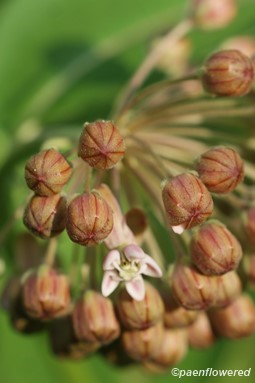
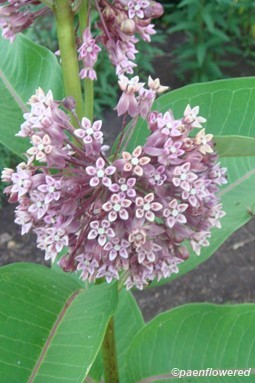
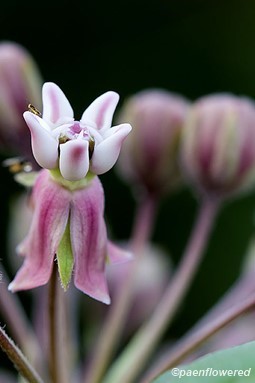
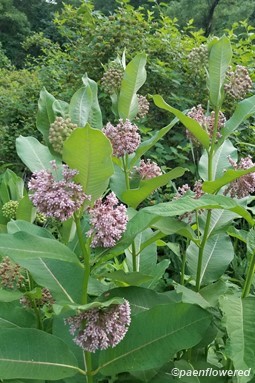
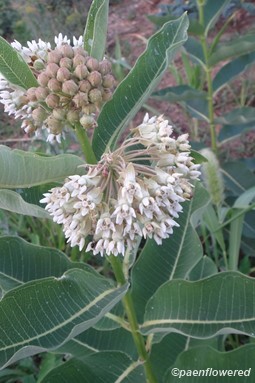
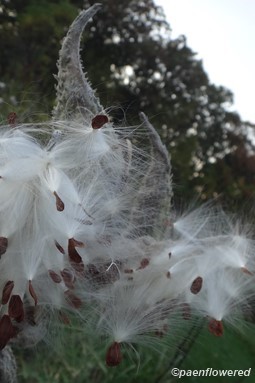
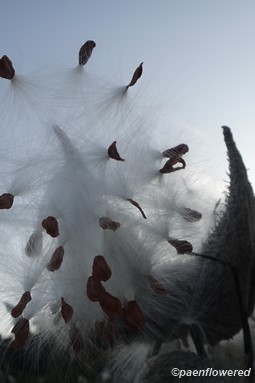
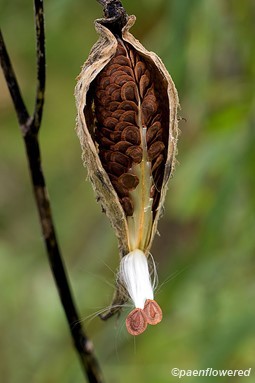


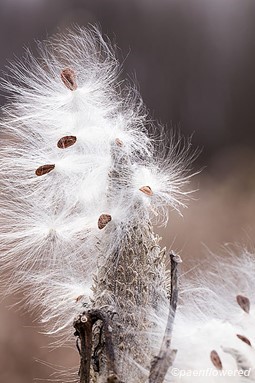








Comments
Have you spotted this plant in your area? We'd love to hear about your experience! Share your comments or questions about the plant below. Comments are moderated before posting.